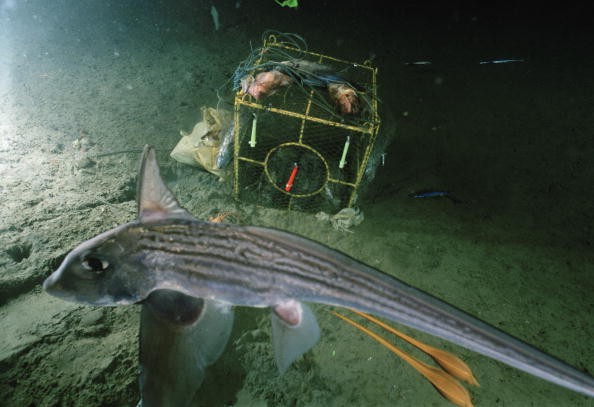
The world of ghost sharks lies beneath the ocean where no sunlight can pierce the deep waters. A one-of-a-kind deep sea creature and rarely seen, it reveals itself to the camera for the first time.
Ghost sharks come in many names and the most common is chimaeras. The bony fish is a relative of the sharks and sting rays and a dead-eyed with fins that resemble wings. These sea creatures living in the deepest depth of the ocean are said to be older than the dinosaurs but still little is known about these fishes. Until Monterey Bay Aquarium Research Institute in California released footage, was the time that mysteries have been unraveled about the puzzling creatures.
National Geographic recalled that the Monterey Bay Aquarium Research Institute launched in 2009 a remotely operated vehicle, or ROV, on a countless underwater expedition to depths reaching to 6,700 feet in waters of Hawaii and California. However, the crews are not looking ghost sharks and in fact, the people behind the video are geologists, according to the program director for the Pacific Shark Research Center at Moss Landing Marine Laboratories, Dave Ebert.
"Normally, people probably wouldn't have been looking around in this area, so it's a little bit of dumb luck," he says.
The fish keeps popping on the footage until the institute decided to get the opinion of Ebert as well as other chimaera specialists. The video was analyzed and concluded that it was a pointy-nosed blue chimaera (Hydrolagus trolli). Typically, the species thrives near Australia and New Zealand based on the latest study in the journal Marine Biodiversity Records.
According to The Washington Post, the video was the first ever captured of the deep-sea creature. The footage was recorded in 2009 in Hawaii and California off coasts observations. The species is sometimes also called ratfish or water bunnies.
Male chimeras have sexual appendages located on the foreheads that can be drawn in. The dots surrounding the head are believed to sensory organs to help the creature locate its food. The fish have tooth plates used for grinding food.
The ghost shark might not be new to science but is still a thrill to record for the first time a pointy-nosed blue chimaera that has been seen alive in its natural habitat. If Ebert and his colleagues are right, the footage is also the first exposure of this species in the Northern Hemisphere.



